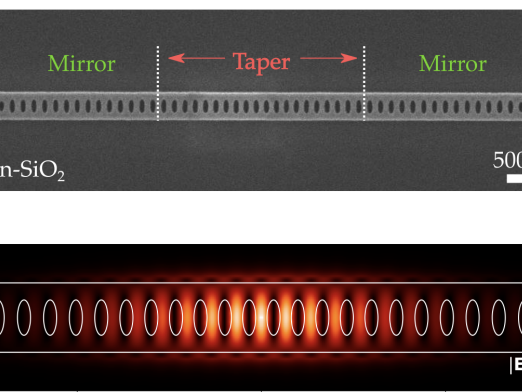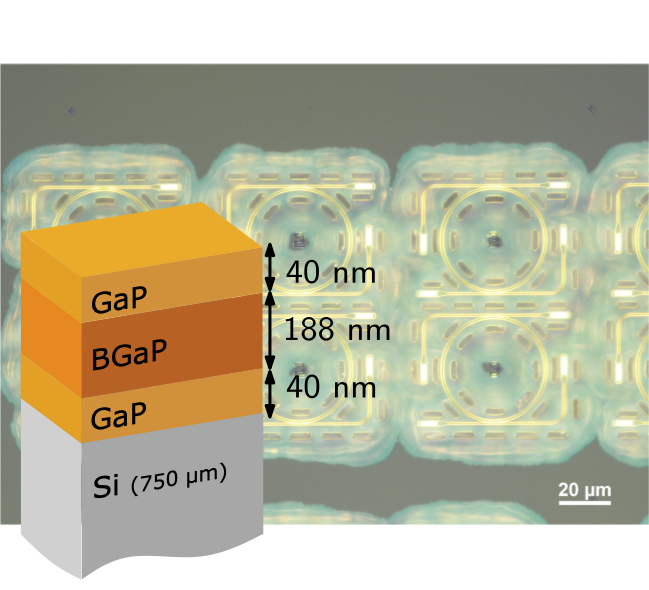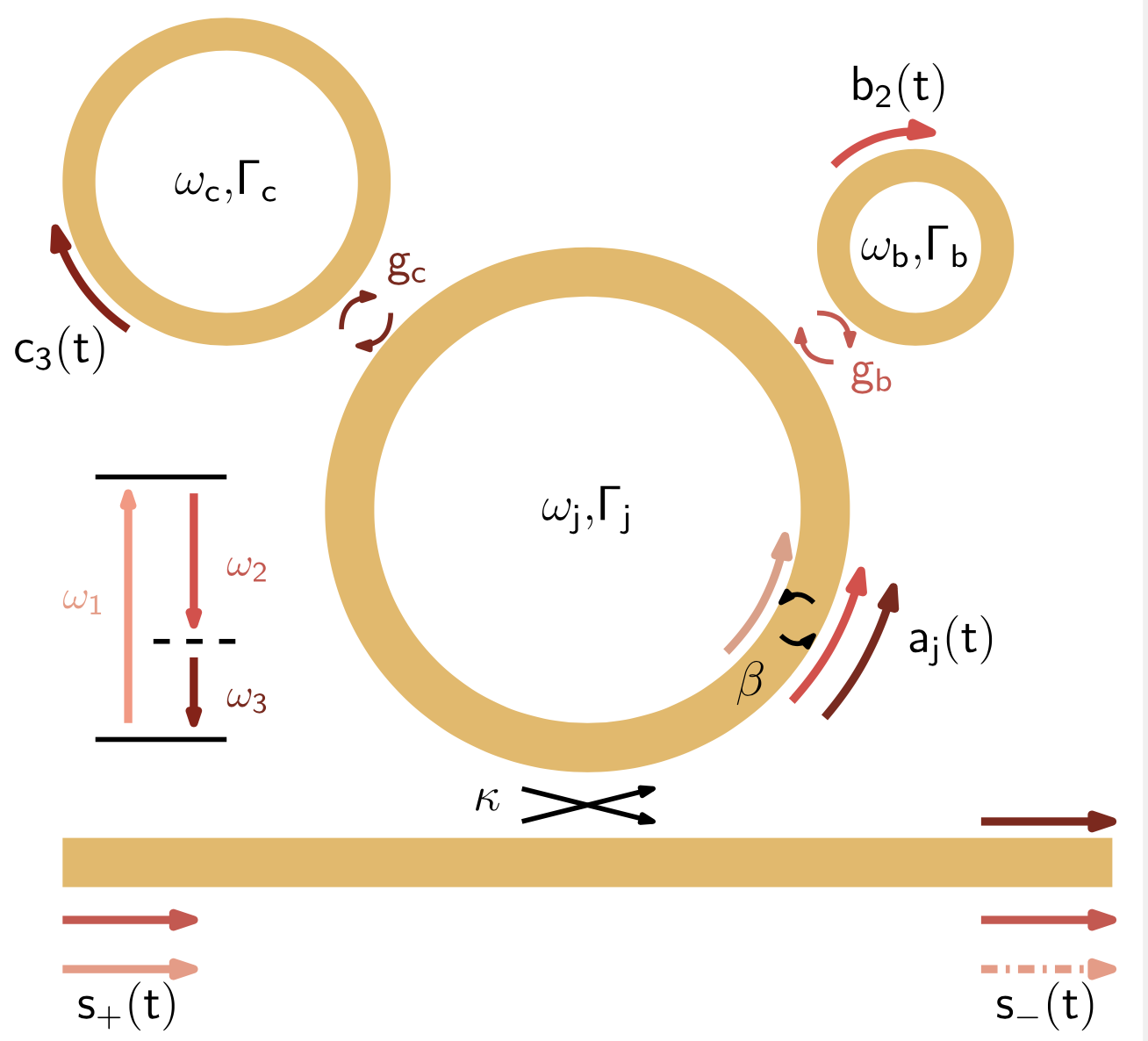Research
Integrated photonics for defect-based quantum networks
Color centers in diamond are optically active spin defects embedded in a diamond host crystal. Their long spin coherences and strong interactions with light make them among the most promising qubit platforms for the realization of long-range quantum networks. However, in order to realize such applications, color centers must be integrated with photonic structures such as cavities and waveguides.
Gallium phosphide (GaP) is a promising nonlinear optical material and is one of the only known materials which can be used for visible-wavelength integrated devices on diamond due to its large bandgap and refractive index. My current research is focused on the modeling, design, and realization of hybrid-integrated GaP-on-diamond photonic devices which may serve as fundamental elements of a quantum network node.
Select publications:
* denotes equal contribution. See this page for a complete list.

"Hybrid integration of GaP photonic crystal cavities with silicon-vacancy centers in diamond by stamp transfer"
Srivatsa Chakravarthi*, Nicholas S. Yama*, Alex Abulnaga, Ding Huang, Christian Pederson, Karine Hestroffer, Fariba Hatami, Nathalie P. de Leon, Kai-Mei C Fu
Nano Lett. 23, 3708 (2023)

"Silicon-lattice-matched boron-doped gallium phosphide: A scalable acousto-optic platform"
Nicholas S. Yama*, I-Tung Chen*, Srivatsa Chakravarthi, Bingzhao Li, Christian Pederson, Bethany E. Matthews, Steven R. Spurgeon, Daniel E. Perea, Mark G. Wirth, Peter V. Sushko, Mo Li, and Kai-Mei C. Fu
Adv. Mater. 36, 2305434 (2024)

"Selective active resonance tuning for multi-mode nonlinear photonic cavities"
Alan D. Logan*, Nicholas S. Yama*, and Kai-Mei C. Fu,
Opt. Express 32, 13396-13407 (2024)
Updated March 2024, all rights reserved.